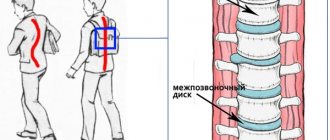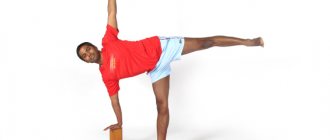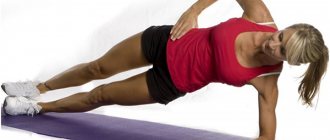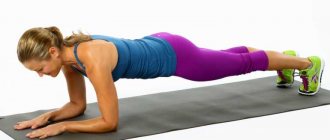Hyperextension (or trunk extension) is an effective exercise for strengthening the lower back, lower back, and buttock muscles. To perform it, you will need a special simulator that allows you to fix your legs and provide vertical lifting of your torso.
Among other things, performing hyperextension has the benefit of strengthening the intrinsic muscles of the spine, which are responsible for maintaining correct posture. However, there are also contraindications - the exercise is not recommended if you have back pain.
What is this
Hyperextension is one of the most useful exercises that helps not only develop, but also strengthen the back muscles in the lumbar region. However, it is only useful if it is performed with the correct technique.
An experienced trainer will always say that there is only one - the only correct execution technique that makes this exercise actually safe and useful.
What is the difference with extension
What is better, extension or hyperextension, we are sometimes asked. Well, it's a touchy question. As a rule, an extension is an exercise in a hyperextension machine in a limited amplitude, without “hyperextension”. Those. confusion is created because It is absolutely wrong to perform this exercise with hyperextension in the lower back.
If we turn to the translation of this word, extension - extension, it becomes clear that it correctly means any extension, no matter what part of the body. In the West, there is an opinion that a mistake crept into the original name of the exercise: instead of “hyper” there should have been “hiper” from “hip” - thigh.
Everything would then fall into place, because extension occurs precisely in the hip joint.
Hyperextension: basic mistakes
This exercise is often performed with errors, disrupting the biomechanics of movement. “Unfortunately, in most cases, hyperextension is performed somewhat incorrectly,” says Alexey Bolyaev, personal trainer at the Women Secrets women’s fitness studio in Tsaritsyno . “And in the way I often see it, there is more harm than good.”
We have compiled a list of the main mistakes that are made when performing hyperextension. These include:
Hyperextension of the lower back. “In this case, the vertebrae can compress the intervertebral discs, which often leads to protrusions and hernias,” adds Alexey Bolyaev.
Incorrect neck position. “Often it is also hyperextended during the exercise; normally, the neck should be simply an extension of the spine,” reminds Nikita Kusakin.
Incorrect “setting” of the simulator. “If you place the machine bench too high or too low, you will disrupt the biomechanics of the movement. Watch this,” warns Nikita Kusakin.
What you should pay attention to? “When working in the simulator, it is important to set it up correctly: the hip supports should end just below the hip joint so as not to interfere with the lowering of the body,” advises Yulia Malenchuk.
Excessive weight of burdens. It is permissible to perform hyperextension by picking up a dumbbell or a barbell disc. But you should not take equipment that is too heavy, this will disrupt the execution technique.
Knee bending. When performing exercises in the simulator, watch the position of your legs: do not bend your knees, as this will “shift” the load from the target muscles.
What muscles work
So, what does the hyperextension exercise do? Some people believe that the main load falls on the buttocks, but this opinion is wrong . In fact, the lower back and the back of the thighs are trained here.
In addition, the shortest muscles of the spine are involved here, which are difficult to load with other exercises.
it is impossible to shift the emphasis to it without getting injured .
- quadratus lumborum muscle,
- core muscles,
- biceps femoris muscle,
- semitendinosus,
- semimembranous,
- hamstring biceps,
- gastrocnemius,
- gluteus maximus muscle.
How the load shifts when performing hyperextension:
Step-by-step illustration of which muscles receive load during hyperextension and at what stage of execution
With the correct technique , the exercise has a low risk of injury, does not overload the joints, maintains muscle tone, strengthens the tendon corset of the spine, and is therefore recommended for beginners and people with weak backs.
Benefit
What is it for, this hyperextension of yours? The answer is simple: try doing it at least once, and you will have the feeling that you went to a first-class specialist for a massage! This exercise is great for relieving tension and muscle triggers and providing a feeling of relief.
Everyone who does sedentary work knows how important it is to quickly and efficiently warm up after a hard day. Hyperextension will help you with this!
This exercise is very important for beginners who love strength training, because they have weak back extensors, which are easily injured in serious multi-joint exercises . And hyperextension is an excellent exercise for strengthening these same muscles.
In general, this is an excellent back trainer that is easy to use even for beginners!
For scoliosis
The exercise will also be useful for people who have back problems .
Hyperextensions reduce the risk of injury to the spine and tendons, as mentioned above, and people who have problems can gradually strengthen their lower back. This exercise will be especially useful for people suffering from osteochondrosis and scoliosis. With regular exercise and exercise in general, they will develop beautiful posture.
For hernia of the lumbar spine
The advantage of hyperextension for your back is that it trains not only the muscles directly related to this area of the body, but also those surrounding it: the abs, buttocks, legs. Their training helps strengthen the entire back as a whole.
When?
- as a warm-up. With its own weight, additional burden in no case do not take. This way you warm up your muscles before serious exercise.
This is a controversial option, since you are creating possible instability of the vertebrae, which you will finish off with the base. It is better to stretch the spine in joint gymnastics, where from a standing position you bend the spine in different directions.
- as a finishing exercise for the back.
Accordingly, after basic exercises, there is no risk as such.
- as a main weight training exercise. To be honest, we don't like this option. Weights that are especially “decent” for you in an exercise in which the body is in an unstable position, and even when bending the lower back, are not a good idea.
If you really want to do hyperextension with weight, then take a maximum of average working weight.
How to do the plank exercise correctly: analysis of the technique with photos>
Exercises at home
If you purchase a fitball, doing the exercise at home will be quite effective. Even during diseases of the spine, doctors allow training with a large ball, since it acts as a shock absorber for the vertebrae. You need to put it on the floor, lie down on the fitball with your pelvis, your back is on top. Hands are put forward, feet are held on the floor. The body lowers down approximately 45 degrees; it is necessary to arch at the waist and align the shoulders. Do the required number of times.
You can perform hyperextension outdoors. If there are two parallel horizontal pipes at different heights on the sports ground, then you can use them for this exercise. It is necessary to fix your heels under the lower pipe, lie with your hips up with your back on the high pipe, then bend your torso.
Another alternative to studying is a sofa:
- You need to lie face down so that your legs and hips are not in the air.
- The second person should press down on the heels and knees.
- Bend your torso down with your arms behind your head or crossed over your chest.
Hyperextension is easy to perform, but does not tolerate mistakes in technique. That is, you don’t need to use weights right away - this can injure your back. Hands with dumbbells should not hang down - they should be pressed to the chest. It is also prohibited to tilt more than 90 degrees. When returning to the starting position, do not bend your lower back too much, raise your head, or bend your knees. If all recommendations are followed, classes will be as effective as possible.
Types of benches for exercise
There are several types of hyperextension and, accordingly, different machines for each of them. Let's look into them!
- Horizontal is a good option, but in our opinion, performing the exercise in this version is not as convenient and safe as in the classic one.
- A bench for abs and hyperextension is the most versatile and compact option; this exercise machine is especially good for home use.
- The reverse hyperextension machine is for those who want to put more stress on their buttocks and thighs.
- The classic inclined machine is the most common and safest machine for performing the exercise.
- roman chair
Some craftsmen manage to create a homemade exercise machine for their home with their own hands! But let's quickly find out how to properly exercise on different types of exercise equipment?
Execution technique
For the back
So, how to do back hyperextension correctly?
Classical
We will consider the most popular option, when the work takes place on a special simulator - a Roman chair , at an angle of 45 degrees. The step-by-step sequence of actions is as follows.
- Starting position: go to the simulator, adjust its height to suit your height, namely: front bolsters must be positioned exactly at the bend of the lower back and hips, bottom rollers must be just above the Achilles tendon.
We do not recommend short hyperextension, with emphasis under the very hips - this makes it easier to lose balance during the execution and is generally uncomfortable.
Place your feet under the lower support roller. The back is flush with the line of the legs. The start begins from this position.
- How to do it correctly: powerfully tighten your gluteal muscles and “break” at the waist through the machine. Tilt your body down slightly, to about a 60-degree angle. At the lowest point of the trajectory, cross your arms over your chest and smoothly (without jerking) lift your body up to a straight line with legs
.
Avoid hyperextension in the lower back. Hold this position for a second (feel the peak contraction) and repeat the movement again. Breathing technique: inhale as you lower, exhale as you rise.
This is the only true and safe option.
Here the height of the supports is at the level of the subgluteal fold, the working muscle groups are dynamically the buttocks and the back of the thigh, and statically the back extensors. There is no hyperextension of the spine (the body rises to the plane of the hips), and at the lowest point the back is not rounded .
Throughout the entire range of motion, the natural deflection of the spine in the thoracic and lumbar regions is maintained. It is difficult to track the technique on your own; you need to do it with a stick, and have someone watch from the side (preferably a coach).
Terrifying deflection
Analysis of the most effective abdominal exercises
Reverse
As a simulator for a reverse variation of this exercise, you can use a gymnastic goat, a Roman chair, a bench or a special one. device In all these options, your “support” will be your own abs!
The advantages of this option for performing hyperextension: a much greater load on the gluteal and thigh muscles, the abs and arm muscles are also statically tensed, but the risk of back injury is minimal - the load in this position is gentle.
By the way, this particular version of the exercise is universally rehabilitative for people with back problems: due to the fact that the body lies on the exercise machine, the load is removed from the spine.
So if you have injuries, but want to load the muscles of your back and buttocks, choose this option!
The technique for performing reverse hyperextension is simple and straightforward:
- Starting position : the torso is on the machine, the legs are slightly raised, the hips and buttocks are tense.
- As you exhale, we raise our spread legs until we feel a peak muscle contraction: for some it is more comfortable to lift to parallel with the hips, for others it is much higher than the body. The main thing in this case is your sensations and comfort.
Please note that lifting should be carried out using force on the buttocks and thighs. Do not make sudden movements: everything should be smooth and carefully controlled.
- Stay in the peak position for 1-2 counts, then, while inhaling, slowly and “thoughtfully” lower your legs to the starting position. Repeat the required number of times.
On the uneven bars
An option for original people or those who really love parallel bars:
On fitball
At home without a gym
So, how can you do the classic exercise and reverse hyperextension at home without machines?
Horizontal on the floor
In general, this exercise is most likely well known to you under the name “boat”. The technique is simple, but the effect is good - by performing the boat, you can effectively “stretch” the quadratus lumborum muscles and back extensors.
The biggest advantage of this exercise is that it is both a classic and a reverse variation.
Technique for performing hyperextension at home on the floor:
- Starting position: lying on your stomach, legs and arms straight and extended.
- How to do it: as you exhale, raise your head, upper body with arms and legs so that your body is not uncomfortable. Remember that hyperextension is bad and harmful to your lower back! Return to the starting position and repeat as many times as necessary.
- Very important: movements should be smooth, no sudden jerks or jerks, this is dangerous for the spine!
This is the wrong technique! There is no need to try to break across, otherwise you never know what will happen.
On the couch
We are categorically against such tricks! All this advice like “get a family member to sit on your feet” or “put down a weight” is extremely dubious. This is an inconvenient and messy version of the exercise that will not bring you any benefit, but it can cause injury!
Just imagine how “wonderful” it will be for you to stick your nose into the floor when the load turns out to be light or poorly secured and falls off your feet. The person may also well be unable to hold you in the desired position.
On the buttocks with a round back
Degree of tediousness : decent, MUST READ. So, let’s discuss the technique “for girls,” as some trainers put it—gluteal hyperextension or technique for the buttocks.
One of the most serious problems in sports (even in home workouts) is the risk of injury to the spine due to incorrect exercise technique, failure to respect the principle of individuality, and the promotion of obviously incorrect exercises ! The last one is the most outrageous!
There are stories on the Internet from all sorts of “experts” that with the help of hyperextension, if you bend in a special way, you can only pump up the gluteal muscles, relieving tension from the back muscles. It is not true . Even if you tie yourself in a sea knot, you will only achieve one thing: back pain and problems with the spine
- Hyperextension on the buttocks with rounding of the back at the lowest point.
Working muscle groups - the back of the thigh, buttocks and spinal extensors in dynamics. The exercise is performed with rounding of the back at the bottom point and hyperextension at the top point + often with inertia and additional weight. Complete, crooked madness, and with weight on top of that!
The lowering of the body occurs too low and there is a large deflection of the body at the top point (during the lifting phase). The back arches dangerously back at the top.
Add to this work at full amplitude, when a person begins to make pendulum movements of the body, swaying back and forth.
This is the most traumatic option , where the entire spine is affected - the fibrous ring, spinal ligaments, tendons of the leg muscles. Severe instability of the spine occurs and the vertebrae may shift over time due to osteochondrosis. Destroyed spinal ligaments cannot be restored, just like the fibrous ring.
Never do this and send everyone who advises you to do so!
- Hyperextension on the buttocks with constant rounding of the back.
The height of the stand is set at the level of the subgluteal folds in order to tilt the pelvis forward, relative to the hips, i.e. you bend very low . The amplitude is again incorrect. The thoracic region is initially rounded and this position is maintained throughout the entire movement of the body.
Here, beginners often have a rounded lumbar region. From the outside it looks like a huge question mark has decided to pump up for the summer.
Working muscle groups - the back of the thigh, buttocks in dynamics, back extensors in statics. When rounding the lower back, the back extensors work dynamically. If we exclude the rounding of the back, the exercise becomes less traumatic, but not safe .
This technique is considered incorrect and excluded from the arsenal of exercises, but someone, somewhere did it once and the wave washed over it. It turns out a similar situation with rounding the back during deadlift , which experienced practitioners are afraid of (rounding).
And at the lowest point, when lowering the body, a stretch occurs in the extensor muscles of the spine, including the cervical spine, and additional tension in the entire spine.
Thus, this exercise increases osteochondrosis, which many people have, and in a healthy spine causes instability of the vertebrae in the thoracic region , due to stretching of the posterior longitudinal ligament.
General information
The technique of performing hyperextension exercises for the back requires correct and regular implementation, as well as preliminary adjustment of the equipment taking into account the clinical condition of the patient.
For maximum efficiency, you need to alternately change the inclination of the machine. The largest angle for hypertension should be 45 degrees.
The simulator for performing the exercise consists of:
- Planks and rollers to hold the hips.
- A bench that is inclined, horizontal or vertical.
- Supports for restraining the shins.
- Devices for changing the angle of inclination.
Your feet should be on a stand with bolsters. It is installed slightly above the Achilles tendon. The exercise machine must always be adjusted to the height of the person who is exercising.
With properly configured equipment, the lower back is not subject to severe overload and performing hyperextension will only benefit the back. Therefore, the preparation of the simulator must be taken with full responsibility.
Attention: hyperextension in a rocking chair is done only under the supervision of an experienced instructor. He regulates the load placed on the lumbar region, constantly monitors the technique, and can also give useful recommendations. It is forbidden to choose the load yourself - you can cause serious harm to the body.
You can also replace the gym with exercises at home, for example, using a fitball, board, bench or barbell.
Since many terms are unknown to most beginning athletes, many people believe that hyperextension and superextension are different exercises, in fact this is not true. There is practically no difference, extension means extension and straightening, and hyperextension means overextension and overextension. That is, the differences are only in the action, but in fact this is the same body extension exercise.
What to replace
So, if you don’t have a hyperextension machine in your arsenal, then the following exercises are suitable for you:
- An excellent exercise for developing back muscles: Good morning: bending over with a barbell on your shoulders . This movement is as close as possible to the hyperextension technique!
- “Boat” or “Superman” , described above.
- Plank : details about this exercise in the article How to do the plank exercise correctly: analysis of the technique with photos
- “Cat” is a good option for those who want to relieve tension from the back muscles and properly relax them after a long period of sitting. It’s extremely simple to do, there are no pitfalls in the technique.
Important nuances
- In all variants, the calf muscles work statically. not be completely straight at the knee joint ; they should be kept slightly bent to avoid hyperextension of the popliteal ligaments and instability of the knee joint.
- The cervical spine is the most vulnerable; you cannot put a barbell/dumbbells or weights on it (yes, yes, I personally saw this)! The barbell is placed just below the trapezius!
- If we do hyperextension with weights, we lift the weight off the floor, and don’t climb on the simulator with him. For some reason, people often perform such perversion, although it is obvious that it is dangerous and simply inconvenient!
Those. took the starting position, picked up a plate/dumbbell/brick and began to perform the exercise. This is the only way, otherwise sooner or later you will pick your face off the floor.
- Hyperextensions with spinal rotation ( vertical rotation ) should also be excluded due to the increased risk of injury.
- An absolute contraindication to all hyperextensions is an intervertebral hernia on a thin stalk at the back of the spine, which can fall off into the spinal canal and put pressure on the nerves.
- It is important to work the gluteal muscles through the entire range of motion and stretch the hamstrings. In order for the gluteal muscles to work well, they need to be activated with other exercises, and at the top point they need to be further strained by contraction. But gluteal hyperextension as such does not exist!
- In no case do we round our back.
- And of course, we don’t chase the scales. First, work “idle”, gradually adding weight, you will always have time to kill yourself.
How to perform hyperextension correctly
To avoid these mistakes, learn the correct technique for performing hyperextension.
So, fix your body position in the simulator. “You can cross your arms over your chest, or take a weight (an option for those who are prepared!). As you inhale, smoothly lower down, keeping your lower back in a neutral position, you should feel a stretch in the muscles of the back of the thigh, as you exhale, rise until the body and legs form a straight line, says Yulia Malenchuk. — When performing this exercise, it is important to monitor the parallelism of the feet (if one foot turns out more than the other, the load on the legs will be uneven), the smoothness of the movement (do not “fall down”, rise up smoothly, and not jerkily due to inertia), the work of the lower back (maintain a neutral position, no flexion-extension in the lumbar region) and range of motion (avoid hyperextension).”











